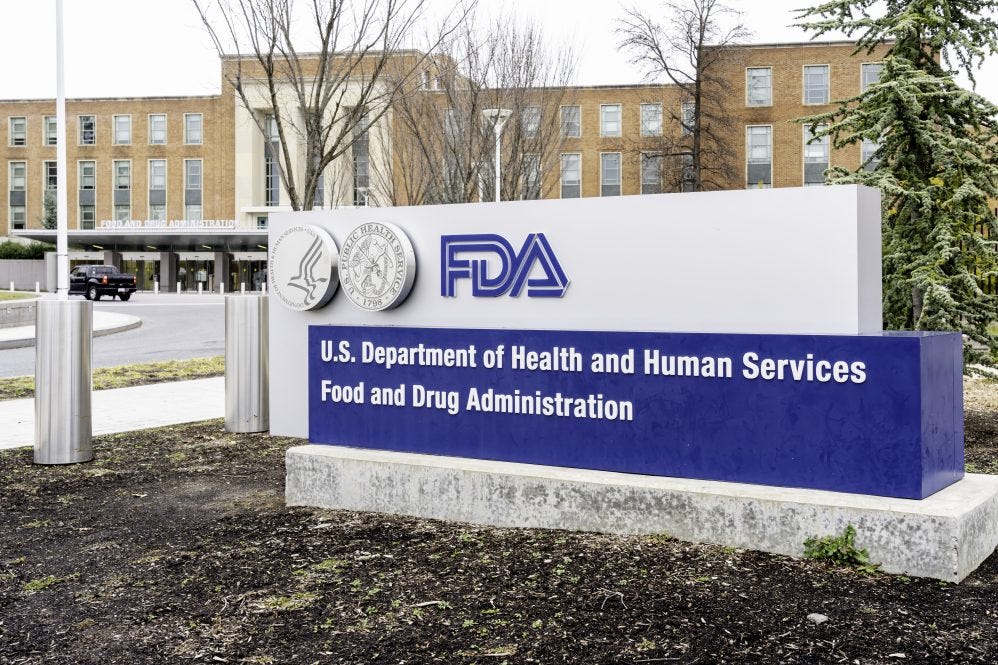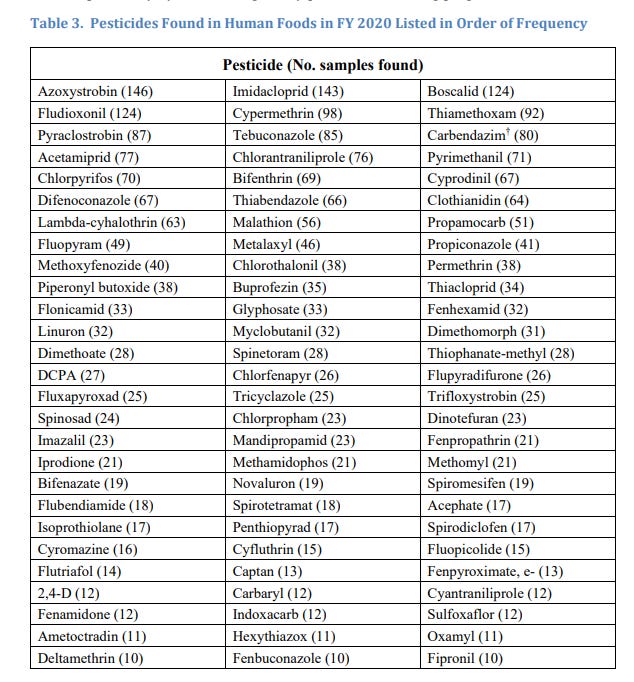Eat up - FDA says 59% of US foods tested contain pesticide residues
All the latest juicy morsels of data
Pesticide residues were detected in 59% of US food samples tested by the Food and Drug Administration (FDA) in its most recently completed annual sampling program, the agency revealed in a newly released report.
Roughly 77% of domestic fruits sampled by the agency contained pesticide residues, and 60% of US vegetable samples also contained residues. About 53% of US grains sampled showed residues.
The agency said that overall it analyzed 2,078 human food samples, 84% of which were imported from other countries. The sampling found that 51.6% of imported foods contained pesticide residues compared to 59.2% of domestic US foods.
The new report is for the fiscal year 2020 and shows that residue detection is up slightly over 2019’s analysis. The FDA’s 2019 report found that 57.6% of domestic samples had pesticide residues. Imported foods analyzed for the 2019 report showed 50.6% with residues.
The FDA, along with other government agencies, say that pesticide residues in food are generally not considered a human health risk, unless they rise to certain “maximum residue limits” (MRL)s set by the Environmental Protection Agency (EPA) for each pesticide used in food production.
The FDA said that in its most recent sampling, 96.8% of domestic and 88.4% of import human foods were compliant with federal standards and not in violation of MRLs. That is down slightly from 2019 when the FDA said it found 98.7% of domestic and 89.1% of import human foods were within allowed pesticide residue limits.
“The findings show that the levels of pesticide chemical residues measured by FDA in the US food supply are generally in compliance with EPA pesticide tolerances,” the FDA said in the report.
But many scientists have increasingly come to doubt regulatory assurances about the safety of a steady diet of pesticide residues, questioning what long-term consumption of trace amounts of pesticides in food could be doing to human and animal health. They also are concerned about the fact that the EPA has in multiple cases declined to apply an additional tenfold margin of safety for infants and children when setting the legal levels for certain pesticide residues. The EPA has said no such extra margin of safety is needed to protect children in those cases.
Also of concern is the fact that the EPA has approved increases in the legal limits for certain pesticides over the years at the request of the companies that sell the pesticides. The EPA has approved several increases allowed for residues of the weed killing chemical glyphosate, for instance. Glyphosate is classified as a probable human carcinogen by the International Agency for Research on Cancer but the EPA considers it not likely to cause cancer.
The FDA also looked at animal food, finding 70% of US animal food samples had pesticide residues, and 51.6% of imported animal food had pesticide residues. All the US animal food samples showed pesticides were within allowed limits, however, and 96.8% of the imported animal food samples were compliant with federal standards.
The top pesticide found in animal food, according to the FDA analysis, was glyphosate; residues of the weed killer were detected in 17 of 27 animal food samples.
Here is the FDA’s list of the pesticides the agency found in food:
You can see more of this story at The New Lede.








